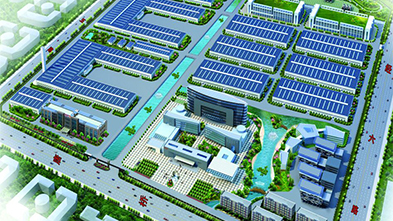Product
News
Contact
Company Name: Guotang Automobile Co., Ltd.
Contact: Chen Lei
Mobile: 15950340707
E-mail: 110942068@qq.com
Website: www.guotangauto.com/en
Address: No. 88, South Ring Road, High-tech Economic Zone, Jianhu County
New energy vehicles become a new choice for public transportation
New energy vehicles become a new choice for public transportation
Date of release:2019-05-14 Author:Guotang Automobile Co., Ltd. Click:
On December 5th, CCID Consulting of the Ministry of Industry and Information Technology released the “2018 China New Energy Bus City Promotion Research Report” in Beijing. According to the report, one out of every three buses in China is currently a new energy vehicle; the report predicts that buses are expected to take the lead in achieving comprehensive new energy.
After more than ten years of development, new energy buses are not uncommon in all parts of the country. While exerting energy-saving and emission-reducing effects, they continue to promote the mature development of the industry through technological accumulation.
"The sights that were only seen in science fiction films in the past"
In January 2009, the Ministry of Science and Technology, the Ministry of Finance, the National Development and Reform Commission, and the Ministry of Industry and Information Technology jointly launched the “Ten Cities and Thousand Vehicles Project” to focus on promoting the development of new energy vehicles in the public transportation sector in large and medium cities.
After 10 years, new energy buses have replaced a large number of traditional buses and become a new choice for public transportation throughout the country.
In Beijing, new energy buses built a moving landscape on Chang'an Street.
"The last time I went to see Tiananmen with my classmates, the first thing that attracted me was the big red guy on the road. Although it was big, it didn't have any noise, and the corner was very flexible." Wu Qiao, a college student, came to the college last year. Beijing, I want to stroll around the capital before the winter vacation, and I took the bus No. 1 in Beijing.
In October last year, the first batch of 10 pure electric 1 bus lines were put into operation, and the body of the 18-meter-long car body, the shape of the large streamline and the appearance of "China Red" were particularly eye-catching. Under the appearance of handsome, the high-safety and high-stability "core" - lithium titanate fast-charged battery pack can complete the vehicle charging in 15 minutes, the maximum cruising range is 130 kilometers, and the low noise is achieved. , zero emissions and no pollution.
The new energy bus T2 road in Zhuzhou City, Hunan Province is sympathetically called the “frozen goddess”.
"I have been driving this new energy bus for 10 years. It is really hard to get. The traditional car may have been 'retired' long ago. The car is still very good in performance, and the passenger flow can also accommodate 60 people at the peak." 15 years of driving experience Zhuzhou bus driver Liu Shifu said.
Due to the large passenger load and frequent start and stop, the various parts of the traditional bus are very expensive, and generally need to be replaced in about 7 years. While driving on the Yang Li line, a T2 road in Zhuzhou City, which represents the “Worker Pioneer” of Zhuzhou Glory, the first batch of 10 medium-car electric hybrid new energy buses have been running unimpeded since they were put into operation in 2008. It has been 10 years.
"We are still worried about the first batch of new energy vehicles. After all, it is new technology and new products." Zhu Jianxin, deputy general manager of Zhuzhou Public Transport Development Co., Ltd. said frankly, "But in the past 10 years, I found that these cars are indeed fuel-efficient. The vehicle core system is also very stable."
The promotion of new energy buses in Shenzhen, Guangdong Province, ran out of "Shenzhen speed."
At the end of last year, with the official re-destruction of the fuel bus that may cause pollution, Shenzhen City took the lead in realizing the pure electricization of the city's franchised bus vehicles, becoming the first city in the country and even the world's largest cities to realize the comprehensive and pure electricization of public transportation.
“The buses here have all cut off the 'black tail' and are very clean.” After graduating from Xiao Deng University in Wuhan, she went to work in Shenzhen. She had to change to two buses every day. “The commuter experience in Shenzhen is better than when I was studying abroad. The experience is even better."
Shenzhen, close to Hong Kong, is a megacity with a population of 12 million. Every day more than 16,000 buses shuttle, but now no one emits polluting gases. The speed of promoting new energy buses in Shenzhen has even aroused the excitement of foreign media.
The Columbia Times described this as “a sight that was only seen in science fiction films in the past”, “compared to the Western world’s beginning in this area.”
All parts of the country are stepping up the replacement and commissioning of new energy buses. The newspaper learned from the website of the Ministry of Industry and Information Technology that as of the end of 2017, the number of new energy buses in China's transportation industry has exceeded 250,000, accounting for nearly 40% of the total number of public steam cars in the country. Among them, Guangzhou City, Guangdong Province, Tibet Autonomous Region, Xinjiang Production and Construction Corps added and replaced buses with new energy vehicles up to 100%, and Changsha City, Hunan Province, new energy bus vehicles accounted for more than 80%, Zhejiang Province, Hangzhou City, the main energy and new energy and Clean energy buses reach 100%.
According to the “13th Five-Year Plan” urban public transport development plan, by 2020, all the municipalities in the key regions of the country, the provincial capital cities, and the cities in the planned cities will be replaced with new energy vehicles.
Lay the foundation for the establishment of the overall industrial chain
“The changes brought about by the new energy bus are absolutely revolutionary. I used to have a bus stop near my home. The noise is very headache every morning and the smell is unpleasant.” Mr. Zhao, who lives in Hepingli, Dongcheng District, Beijing, said. "I will ride a bicycle at that time. Sometimes I will wait for the bus next to the red light. When I start, the exhaust is black and sultry."
New energy vehicles are more environmentally friendly than diesel vehicles. Taking the 8.5-meter pure electric bus as an example, each pure electric vehicle saves 16.6 tons of standard coal and reduces carbon dioxide emissions by 41.3 tons per year, which plays a role in improving air quality and establishing an environmentally friendly city.
Zhuzhou New Energy Bus saves 30% of fuel compared with traditional fuel vehicles. The data shows that each vehicle travels about 60,000 kilometers a year, accumulating fuel savings of 59,400 liters and reducing carbon emissions by 445.5 tons. 10 vehicles have been running for 10 years, reducing fuel costs by more than 3.6 million yuan and reducing carbon emissions by 35,640 tons.
The average daily operating mileage of a pure electric bus in Shenzhen is 174.4 kilometers, which is 72.9% higher than that of traditional diesel buses. From this calculation, Shenzhen can burn 345,000 tons of fuel per year and reduce pollutants such as sulfur dioxide by 431.6 tons.
“In the city, pure electric buses achieve zero carbon dioxide emissions, and the annual emission reduction is equivalent to 9.5 years of carbon dioxide absorption of green vegetation in Wutong Mountain Scenic Spot in Shenzhen,” said Zheng Jingyu, head of the public transportation department of Shenzhen Public Transportation Administration.
According to the forecast of the Highway Science Research Institute of the Ministry of Transport, during the “Thirteenth Five-Year Plan” period, the energy consumption of new energy buses nationwide will be reduced by 5.93 million tons of standard coal and 12.5 million tons of carbon emissions.
In addition to bringing about real emission reduction effects, the “first step” bus industry has also promoted the development of the national new energy vehicle industry through technology iteration.
“The country’s initial promotion of new energy vehicles was mainly in the public transport sector because there was no relevant industrial conditions and the lack of power batteries and drive motors.
The address of this article:http://www.guotangauto.com/en/news/448.html
Recently browse:
Related products:
Related news:
苏ICP备19031716号 Powered by Clouds platform Technical Support:Xiangyun Platform Yancheng Company





